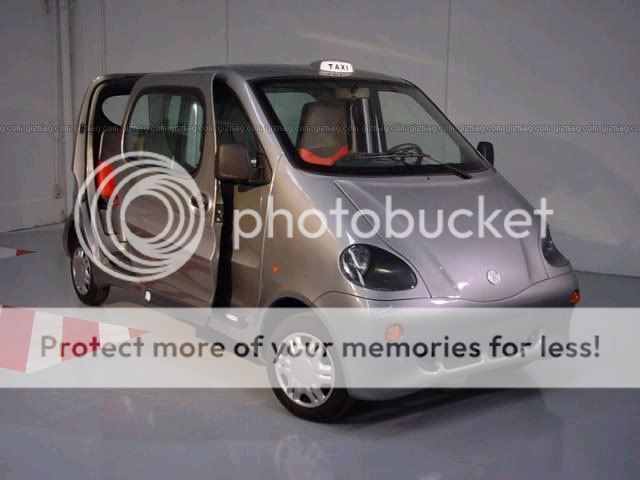Now here is this crazy machine, sent to me via email:


March 19, 2007 Many respected engineers have been trying for years to bring a compressed air car to market, believing strongly that compressed air can power a viable "zero pollution" car. Now the first commercial compressed air car is on the verge of production and beginning to attract a lot of attention, and with a recently signed partnership with Tata, India’s largest automotive manufacturer, the prospects of very cost-effective mass production are now a distinct possibility. The MiniC.A.T is a simple, light urban car, with a tubular chassis that is glued not welded and a body of fiberglass. The heart of the electronic and communication system on the car is a computer offering an array of information reports that extends well beyond the speed of the vehicle, and is built to integrate with external systems and almost anything you could dream of, starting with voice recognition, Internet connectivity, GSM telephone connectivity, a GPS guidance system, fleet management systems, emergency systems, and of course every form of digital entertainment. The engine is fascinating, as is and the revolutionary electrical system that uses just one cable and so is the vehicle’s wireless control system. Microcontrollers are used in every device in the car, so one tiny radio transmitter sends instructions to the lights, indicators etc
There are no keys, just an access card which can be read by the car from your pocket.
Most importantly, it is incredibly cost-efficient to run according to the designers, it costs less than one Euro per 100Km (about a tenth that of a petrol car). Its mileage is about double that of the most advanced electric car (200 to 300 km or 10 hours of driving), a factor which makes a perfect choice in cities where the 80% of motorists drive at less than 60Km. The car has a top speed of 68 mph.
Refilling the car will, once the market develops, take place at adapted petrol stations to administer compressed air. In two or three minutes, and at a cost of approximately 1.5 Euros, the car will be ready to go another 200-300 kilometres.
As a viable alternative, the car carries a small compressor which can be connected to the mains (220V or 380V) and refill the tank in 3-4 hours.
Due to the absence of combustion and, consequently, of residues, changing the oil (1 litre of vegetable oil) is necessary only every 50,000 Km.
The temperature of the clean air expelled by the exhaust pipe is between 0 - 15 degrees below zero, which makes it suitable for use by the internal air conditioning system with no need for gases or loss of power.
How does it work?
90m3 of compressed air is stored in fibre tanks. The expansion of this air pushes the pistons and creates movement. The atmospheric temperature is used to re-heat the engine and increase the road coverage. The air conditioning system makes use of the expelled cold air. Due to the absence of combustion and the fact there is no pollution, the oil change is only necessary every 31.000 miles.
At the moment, four models have been made: a car, a taxi (5 passengers), a Pick-Up truck and a van. The final selling price will be approximately 5.500 pounds.
The Company
"Moteur Development International" (MDI) is a company founded in Luxembourg, based in the south of France and with its Commercial Office in Barcelona. MDI has researched and developed the Air Car over 10 years and the technology is protected by more than 30 International patents and MDI is actively seeking licensees, with according to the company, 50 factories in Europe, America and Asiasigned already.
The Factory
It is predicted that the factory will produce 3.000 cars each year, with 70 staff working only one 8-hour shift a day. If there were 3 shifts some 9.000 cars could be produced a year.
The Tata Agreement
Tata Motors is India's largest automobile company, with revenues of US$ 5.5 billion in 2005-06. With over 4 million Tata vehicles on Indian roads, it is the leader in commercial vehicles and the second largest in passenger vehicles. It is also the world's fifth largest medium and heavy truck manufacturer and the second largest heavy bus manufacturer.
Tata has signed an agreement with MDI for application in India of MDI’s engine technology, and believes the engine is viable; its press statement described it as an efficient, cost-effective, scalable, and capable of other applications such as power generation.
The agreement between Tata Motors and MDI envisages Tata supporting further development and refinement of the technology, and its application and licensing for India.
MDI is a small, family-controlled company located at Carros, near Nice (Southern France) where Guy and Cyril Negre and their technical team have developed the engine technology and the technologically advanced car it powers.
Pretty hard to say an air powered car could hurt the enviroment.



